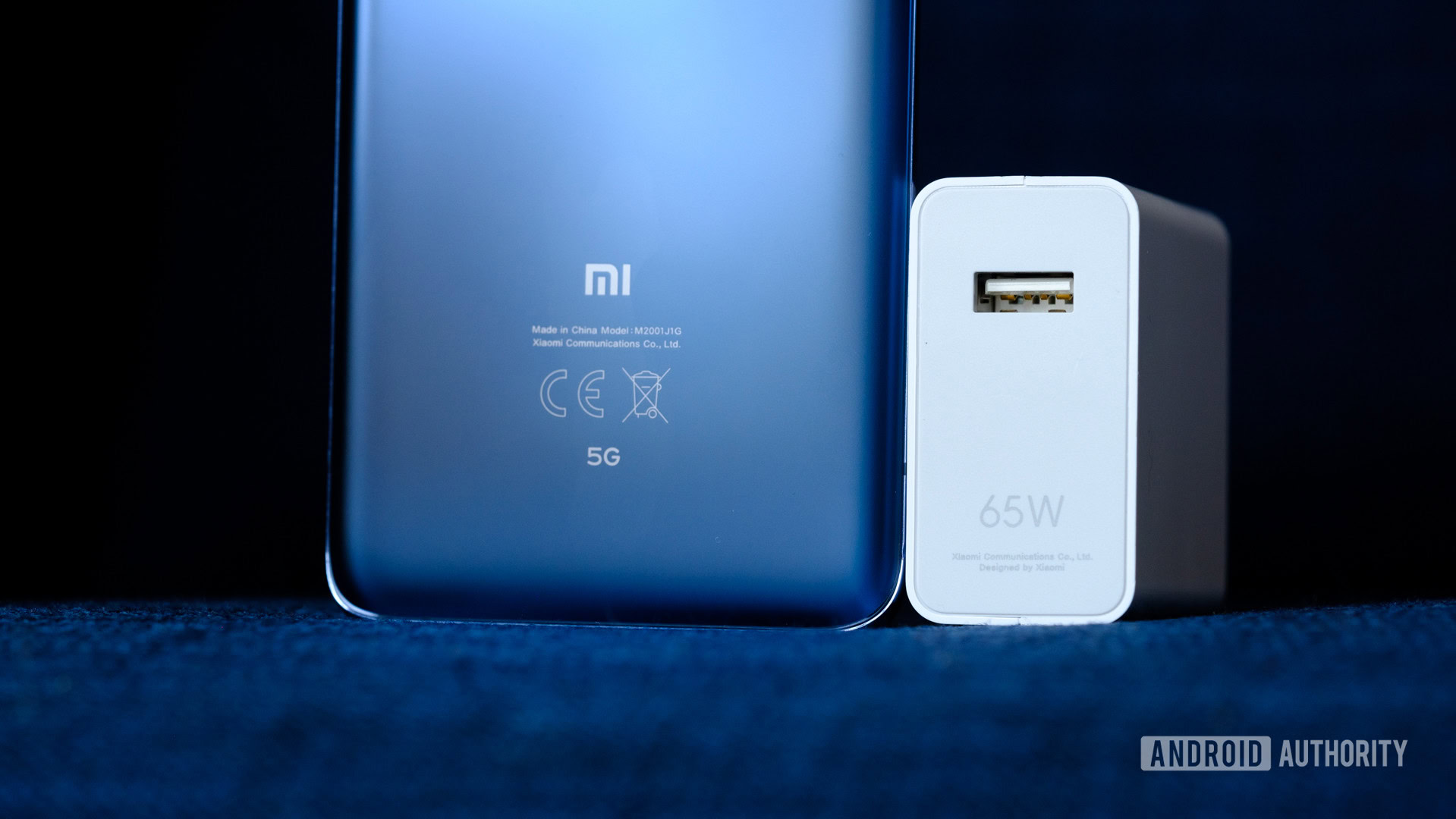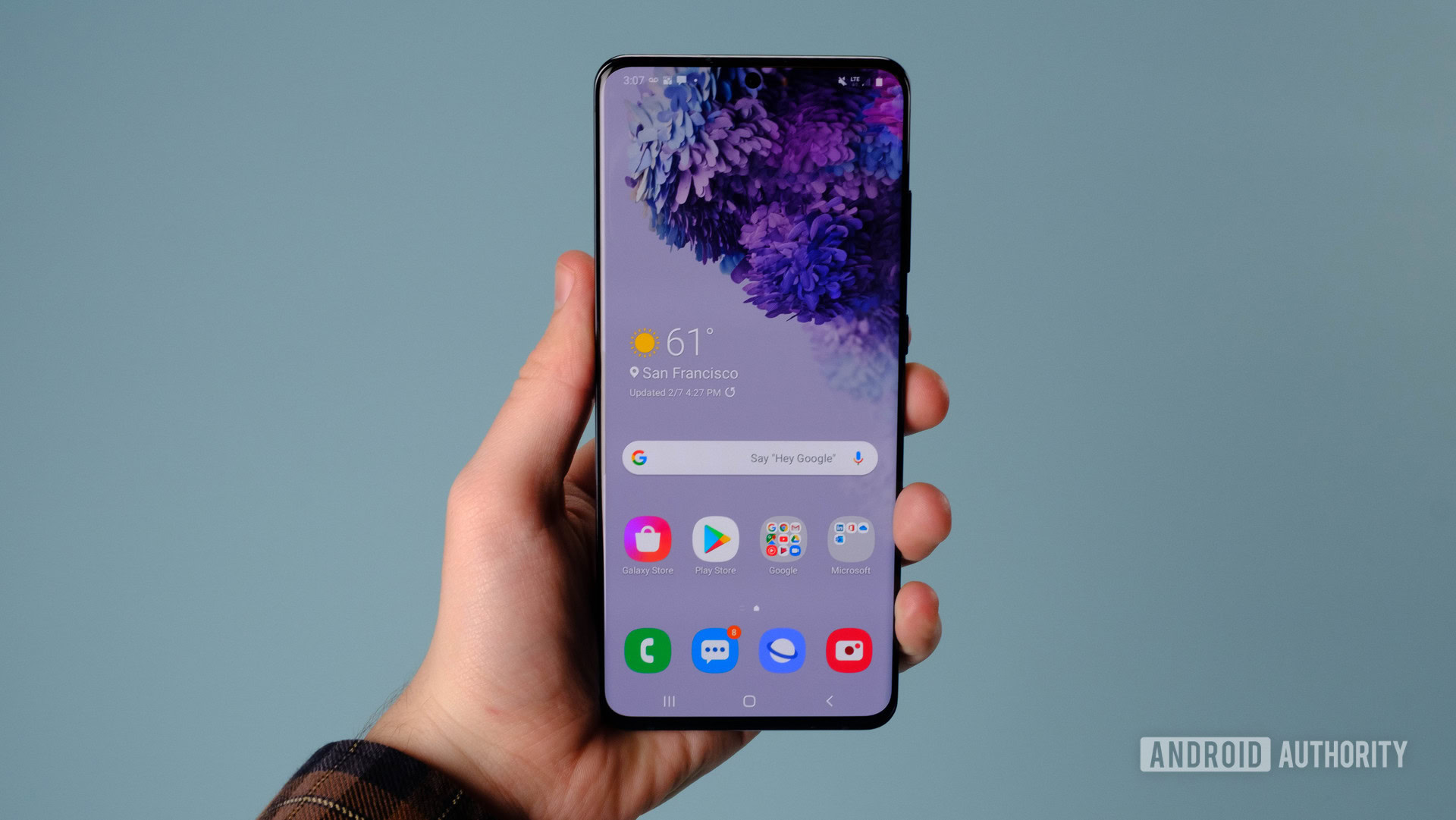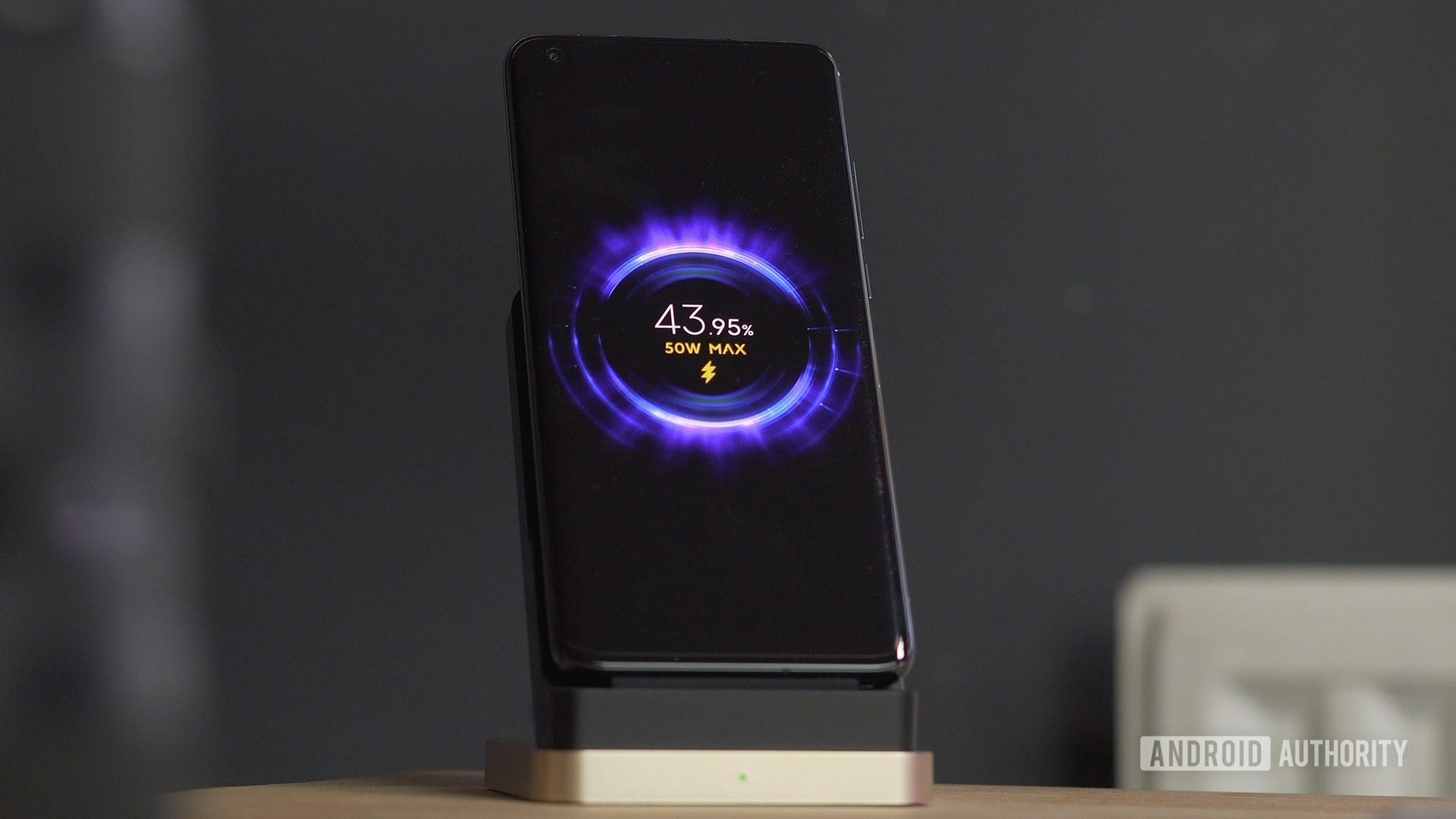Affiliate links on Android Authority may earn us a commission. Learn more.
The rise of ultra-fast charging: How 2020 changed the way we recharge our phones

Fast charging has become one of the must-have features on the best Android phones. It allows you to top up your smartphone in well under an hour. 2020 was the year where ultra-fast charging truly hit the mainstream, with major strides from manufacturers resulting in phones frequently reaching 65W speeds. In fact, we even saw 100W+ charging make an appearance this year.
Today’s fast charging solutions generally tend to be proprietary technologies. Nevertheless, it’s possible to use third-party cables and chargers to top up these devices anyway (albeit at slower speeds).
So, what if you want the fastest charging phone regardless of the tech behind it? Well, we put a host of phones through tests last, and this helped us determine the fastest charging phones of 2020. Before digging into these results, it’s worth bearing in mind that we tested these phones with adaptive charging disabled where possible. This way, we can figure out the true top speeds as the brand may have claimed.
The fastest charging phones of 2020
There’s a new king in town when it comes to smartphone charging speed, as the Xiaomi Mi 10 Ultra marks the debut of 120W charging. Granted, our own Rob Triggs showed that the phone isn’t actually charging at anything close to 120W (more like 80W), but the phone still managed to hold its own against the competition.
Now, 100W+ charging does give us cause for concern in terms of battery degradation. However, Xiaomi previously told Android Authority that the battery should retain over 90% capacity after 800 charging cycles. Therefore, you shouldn’t see drastically reduced battery life in two years, at least according to Xiaomi.
Xiaomi’s phone also stands out thanks to its use of a GaN charger. The material enables higher energy efficiency and cooler temperatures. And we know that temperature is a key metric for fast charging and battery health. However, it’s still somewhat concerning that our testing shows the phone reaches temperatures of just over 43 degrees Celsius with 80W charging — breaching the much safer 40-degree barrier.
Fortunately, the Xiaomi phone’s 120W charger only wastes 7.3% of the power it draws from the wall. Meanwhile, bundled chargers from the likes of Google, Samsung, and HUAWEI waste between 15% and 19% of the power drawn from the wall. So, despite the temperature concerns and lower than advertised charging speed, it’s still very efficient.
BBK is well-represented here as well, with the realme X50 Pro (second), OPPO Find X2 Pro (third), realme X3 Superzoom (sixth), the OnePlus Nord (seventh), OnePlus 8 Pro (eighth), and OnePlus 8 (ninth) all in the top ten.
BBK's brands are well-represented but Xiaomi produced the fastest charging phone of the year.
We were quite intrigued by the difference between the realme X50 Pro and the realme X2 Pro given their similar battery sizes and 65W charging support. However, AA’s David Imel found that the OPPO Find X2 Pro reached 99% capacity in 33 minutes before taking roughly 10 minutes to hit 100%, with no visible toggle for smart charging.
Either way, the list goes to show maximum listed speeds don’t always translate into more power and faster charging in real-world usage. For example, the 30W-toting realme X3 Superzoom is only a few minutes behind the Mate 40 Pro, despite the HUAWEI device touting 66W wired charging.

Two other phones that impressed us were the Galaxy S20 Ultra and the POCO X3. Sure, they didn’t exactly top up in under an hour, but the phones pack the biggest batteries on the list. We only tested the S20 Ultra with the included 25W charger despite it offering 45W capabilities. Its 5,000mAh pack still topped itself up in no time. Meanwhile, the POCO X3 NFC delivers a 5,160mAh battery with 33W charging via the included adapter, topping up just a minute faster than the Samsung device. Again, it serves as evidence that you don’t need all the watts for great results.
Speaking of the POCO device, it and the OnePlus Nord are the only two mid-range phones on the list (i.e. under $500). Hopefully, we see even more wallet-friendly devices on the list next year.
It might not be represented on the list, but 2020 also saw wireless charging make impressive strides. OPPO revealed 65W wireless tech in July. However, the best it could do in a commercial phone was 40W for the OPPO Ace 2. HUAWEI then brought 50W wireless top-ups to the Mate 40 Pro duo, boasting a higher wattage than wired charging on its previous flagships.
Where to next for fast charging phones in 2021?

One of the biggest downsides to fast charging is that many brands opt for proprietary charging solutions in lieu of a widely used standard. This means your proprietary USB-C charger might not work with other phones. Fortunately, chip king Qualcomm is making a big move in this area.
The chipmaker announced Quick Charge 5 earlier this year. It offers 100W+ charging speeds and is capable of topping up a 4,500mAh battery in 15 minutes. It’s also compatible with both older Quick Charge standards as well as the nippy USB-PD PPS standard. In other words, your Quick Charge 5 charger should be able to deliver blazing fast speeds to your 2021 flagship, while also topping up your Nintendo Switch or wireless earphones.
The new Quick Charge standard debuted on the Snapdragon 888 processor, which will be adopted by most of the major smartphone brands in 2021. This, therefore, opens the door for a ton of flagship phones to offer 100W+ charging next year. In fact, Oppo and Realme have announced 100W+ charging tech as well, so we’re expecting them to join Iqoo and Xiaomi in 2021.
Even without Quick Charge 5, we’re looking forward to more brands adopting the USB-PD PPS standard. It allows for blazing-fast charging speeds too. For example, the Mi 10 Ultra uses USB-PD PPS to charge at an impressive 50W, while OPPO is supporting it in its 125W fast-charging tech too.
We saw our first 100W+ phones in 2020, but the pieces are coming together for widespread adoption next year.
One potential area of concern as a result of 100W+ charging speeds will be battery degradation. As mentioned earlier, Xiaomi reassured us that its solution retains over 90% of the battery after roughly two years. However, OPPO previously revealed that its 125W Flash Charge tech, announced back in July, results in 80% degradation after 800 charging cycles (just over two years). So, a 125W phone with a 4,000mAh battery will effectively have a 3,200mAh battery after 800 charging cycles if it used OPPO’s tech.
Drastic battery degradation is a particularly important topic to tackle in 2021 as the likes of the EU are set to bring more right to repair legislation into force. We all know that manufacturers generally make it tough for users to replace their phone batteries at home.
What would you like to see from phones in terms of charging/batteries?
Speaking of batteries, we’re also expecting more advances in this field to facilitate faster charging. We’ve already seen brands like OPPO split batteries in two for older phones like 2018’s R17 Pro in order to improve charging speeds. Xiaomi also took this approach for the fast charge king — the Mi 10 Ultra. OPPO has a few more advances up its sleeve, such as 6C batteries to withstand the higher charge/discharge currents.
We’re not sure if we’ll see 100W+ charging come to budget phones next year. However, devices like the POCO M2 Pro and OnePlus Nord N10 nevertheless upped the charging ante in 2020, delivering 30W or higher speeds. It stands to reason that plenty more wallet-friendly phones will be equipped with the tech next year.
See also: Fastest charging cables — which one is best for you?
In fact, Redmi GM Lu Weibing recently told Android Authority that fast charging will “likely soon make its way to smartphones priced within RMB 2,000 (~$306),” citing recent advancements. There’s no word on how fast Xiaomi is thinking for this price segment, but it previously launched 30W+ phones in this category.
2021 could also play host to another major charging trend. Rumors abound that Samsung could follow Apple in abandoning the in-box smartphone charger. We could see this happening for brands that don’t tout super-fast charging speeds. However, manufacturers offering 100W+ charging will likely provide the equivalent charger in the box anyway to guarantee the fastest speeds. Either way, we hope OEMs switch to more efficient, cooler GaN chargers in 2021.
What charging-related features would you like to see from phones next year? Let us know via the poll above!